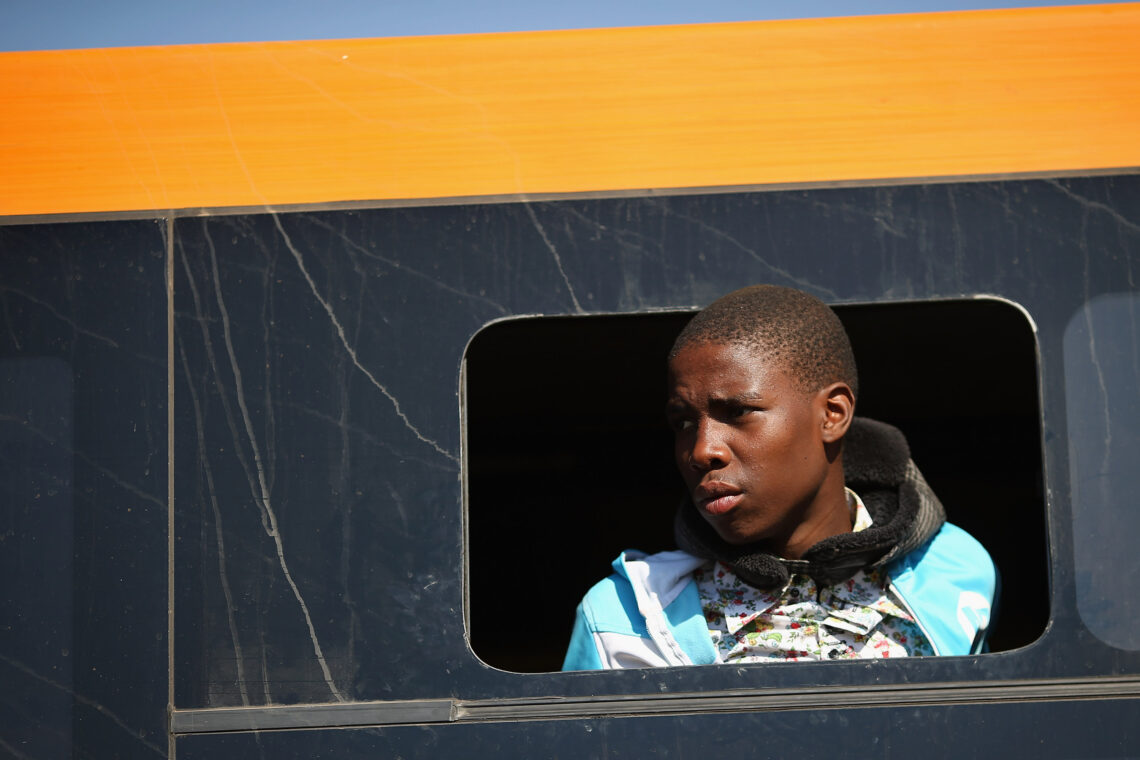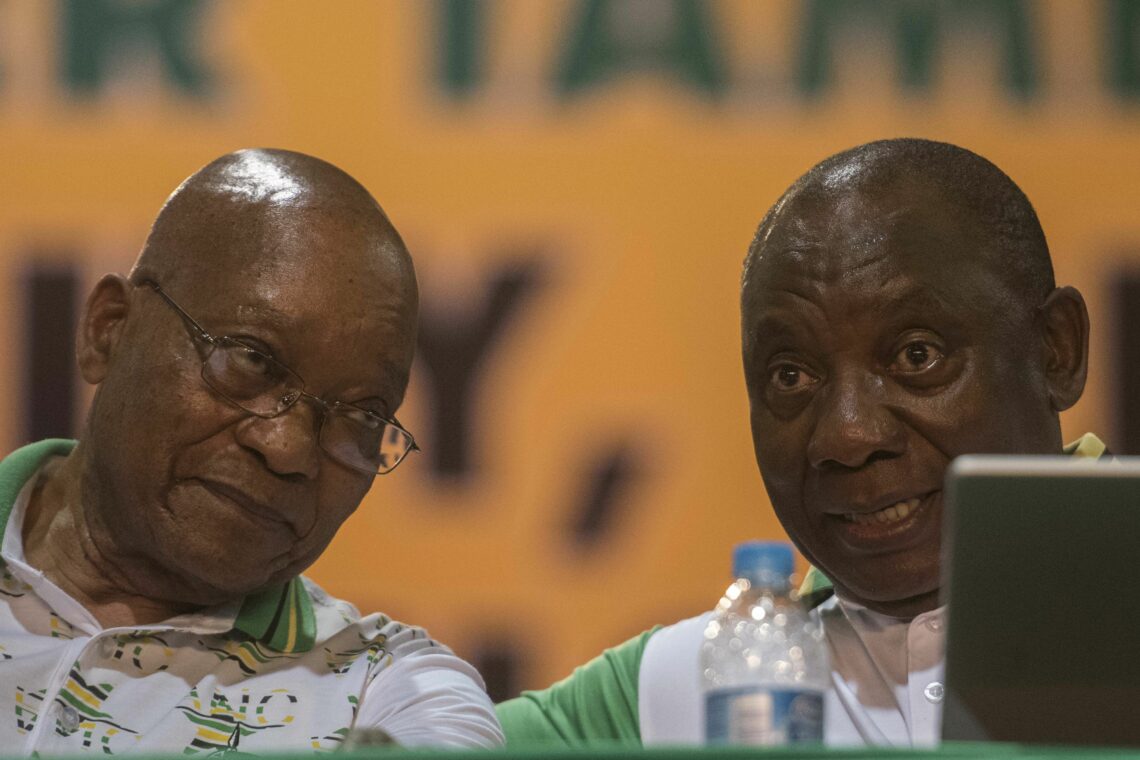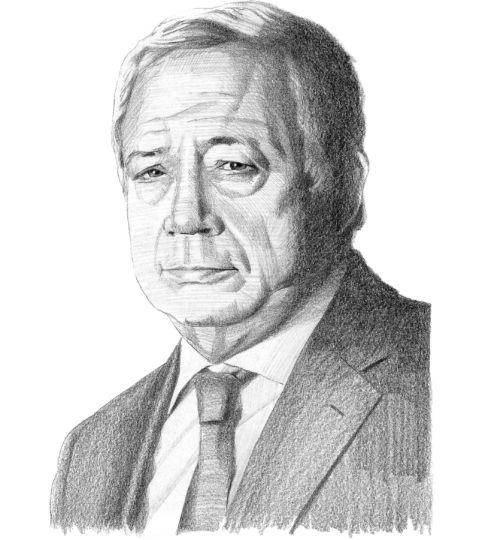Rifts deepen in South Africa
South Africa’s summer of turmoil has left the government with stiff challenges to address. President Ramaphosa will need to deal with the economic damage caused by the riots as well as the socioeconomic fault lines that have destabilized South Africa over the last decade.

In a nutshell
- The riot organizers capitalized on widespread anger
- The political establishment is deeply divided
- Ethnic tensions will make collaboration difficult
Last July’s unrest in South Africa was the worst since the end of the apartheid in 1994. Over 350 lives were lost and more than 4,000 people were arrested. Thousands were injured, and more than 40,000 banks, factories, shops, restaurants and shopping malls were looted and burned in the provinces of KwaZulu-Natal and Gauteng.
The immediate cause for this eruption of violence was the imprisonment of former President Jacob Zuma, but there were socioeconomic factors behind the popular fury. A country of 60 million inhabitants, South Africa faces unemployment figures close to 33 percent, up to 66 percent among people under the age of 35.
Immediate political trigger
The basis for the arrest of the 79-year-old former president was a court decision declaring him “guilty of the crime of contempt of court for failure to comply with the orders of the Constitutional Court of South Africa, in a case of ‘State Capture, Corruption and Fraud in the Public Sector.’ ” Mr. Zuma’s mandates (2009-2018) were marred by corruption charges and financial scandals, notably several involving the wealthy Gupta brothers, like the Guptagate affair in 2013.
The controversial South African leader has always been the target of allegations of financial wrongdoing.
The 127-page decision by the Constitutional Court underlined Mr. Zuma’s disregard for the judiciary – a sensitive subject in South Africa. Both before and after the apartheid regime, South African courts have always been considered effective and independent. They have ruled against the political establishment when justified, earning the respect of citizens as well as the international community.
Populist leader
Jacob Zuma was born into a Zulu family in the Natal Province. The son of a policeman, he became involved with the African National Congress’s (ANC) armed branch, the uMkhonto we Sizwe, at a very young age. He was then arrested and spent 10 years on Robben Island with Nelson Mandela and other ANC leaders. After his release, he went to Mozambique and Zambia, and was named head of the Security and Intelligence department of the ANC. He was also a member of the South Africa Communist Party but left in the 1990s.
In secrecy, he participated in the ANC’s first negotiations with South African National Defence Force representatives. By attracting Zulus to the ANC, he created a voter base for himself, becoming leader of the party and then deputy president under Thabo Mbeki, Nelson Mandela’s successor, and at last president.
A popular figure both among the Zulus and the general population, the controversial South African leader has always been the target of allegations of financial wrongdoing and corruption. In June 2005, then-President Mbeki dismissed him from the vice presidency under the suspicion of having taken bribes from a French weapons manufacturer. He was later charged with raping a young girl, the daughter of a family friend. The fight between the two politicians escalated, but it was ultimately Mr. Zuma who came out on top.
Throughout his career, the former president often evoked his Zulu identity and his adherence to Zulu traditions, like polygamy. This earned him harsh criticism from several sectors of the South African society, which considered these claims incompatible with a modern leader. He also spent significant state funds on personal projects like the renovation of his private residence in Nkandla. Accusations of corruption escalated during his presidency, with repeated accusations of “missing money.” He will appear in court in early September to face charges of corruption, fraud, racketeering and money laundering.
Before his arrest, his supporters – including former members of uMkhonto we Sizwe – claimed they would never let him go to jail. But after initially resisting, Mr. Zuma surrendered himself. Widespread unrest began immediately. The scale and synchronicity of the protests suggest there must have been prior coordination. To contain the violence, police forces were joined by 2,500 soldiers of the South African National Defence Forces. The material losses are valued at billions of dollars.
Balance of power
Since the establishment of democracy, the ANC has been the dominant party among the country’s Black majority. Even if the party has lost the almost absolute majority that it enjoyed in the country’s first postapartheid elections, it still benefits from a full majority in parliament, where it holds 230 seats out of 400. The Democratic Alliance (DA) hold 84 seats; the Economic Freedom Fighters (EFF) 44; the Inkatha Freedom Party (IFP) 14; and the Freedom Front Plus (FF Plus) 10.
The DA is the main opposition party, which traditionally has the support of the majority of Whites, and other minorities, but also some part of the Black population. Its leader is John Steenhuisen, who is White. The EFF is a radical offshoot of the ANC, headed by Julius Malema, former leader of the ANC Youth, while the IFP and the FF Plus are associated with the Zulu and Afrikaner community, respectively.
Even if these parties have members from every ethnic group, political allegiance in South Africa is deeply tied in with ethnicity. The country’s population is made up of 80 percent Blacks, other colored minorities account for 12 percent and the remaining 8 percent is of European descent. Some 85 percent describe themselves as Christian, with the rest split between atheism, African religions and Islam. The hegemony of the ANC depends on keeping these different factions united.

In the aftermath of the latest Zuma scandal, President Cyril Ramaphosa referred to “divisions” inside the ANC National Executive Committee, acknowledging that the ruling party “had waited too long to recognize rampant corruption.” Meanwhile, Mr. Zuma declared in court on July 15 that he had been “the victim of a campaign of vilification.” He was then admitted to hospital. Military doctors signed a report stating his health did not allow him to stand trial, but he refused to be examined by doctors selected by the court.
The ANC is yet again facing a clear split inside its ranks. In the 2016 municipal elections, it lost control of important urban areas, punished by voters for its bad handling of local government and the corruption scandals of the Zuma presidency. Under pressure from public opinion and his own party, Jacob Zuma stepped down from the presidency in February 2018. And, in the legislative elections of 2019, the ANC secured a victory, but with a thinner margin than before.
Aftermath
Sihle Zikalala, the premier of the Kwazulu-Natal province, who after the riots made an appeal for the release of Mr. Zuma, later apologized and endorsed the official government line, maintaining that the violence was orchestrated with the intention of subverting the state.
Racial tensions also rose. The Indians in Kwazulu-Natal organized self-defense groups in their communities. Both President Ramaphosa and well-established journalists declared that the July riots were part of a coordinated master plan carried out by a shadow network aiming to destabilize the country. And there is indeed evidence that the turmoil was not a spontaneous occurrence, but the product of a sophisticated command network.
Observers and experts in South African politics describe two factions within the ANC. One is moderate and pro-business, recognizes President Ramaphosa’s leadership, supports law and order, and is critical of Mr. Zuma. The other, the Zuma-loyalist RET faction, is led by people like radical White politician Carl Niehaus, who campaigned to liberate the former president. Some have asked for a presidential pardon for the former leader. But President Ramaphosa has so far been cautious in his actions.
First estimates point to economic losses close to $3.4 billion.
Faced with the consequences of the unrest, Mr. Ramaphosa has a difficult choice to make. He is aware that Jacob Zuma still enjoys significant popularity both within the ANC and in the general population. Moreover, according to his adversaries in the ANC, the former president has kept a very strong influence network in what is deemed the “South Africa Deep State.” Some believe a parallel intelligence structure remains under his control or influence.
Considering the above, granting a pardon to his predecessor could be perceived by many as a sign of weakness from President Ramaphosa. Other challenges lie ahead. Immediately after the riots, there was a lack of basic products like bread and milk, seriously affecting the daily livelihood of a significant part of the population. The government will have to reestablish trade routes and restore the food supply chain to avoid food shortages. First estimates point to economic losses close to $3.4 billion.
Scenarios
Shortly after the riots, on August 5, President Ramaphosa announced a government reshuffle.
The state authorities’ slow reaction to the riots has led to widespread suspicions of complicity with the agitators inside the intelligence and security apparatus. The cabinet reshuffle could have been an attempt at bringing security and intelligence capacities under the president’s control. The Ministry of State Security was disbanded, and the State Security Agency was integrated into the presidential office.
The new finance minister, Enoch Godongwana, is considered friendly to markets and investors, and is a close associate of Mr. Ramaphosa. His appointment was seen as the most positive move in the governmental reshuffle, which several observers otherwise deemed a missed opportunity.
Riots were bound to happen given South Africa’s explosive social situation. In past conflicts, the worst was prevented by cooperation between leaders of different political and ethnic communities. But in the current climate, the streets seem more difficult to control.
While the apartheid-era political divisions may have been mostly overcome, a great socioeconomic gap between different communities remains. The Black majority’s unfulfilled expectations of better living conditions help explain how violence caught on so easily.
Even if law and order are restored, only a rapid answer to the deep social problems of the country will prevent a new cycle of violence. Citizens are deeply dissatisfied, while unemployment and poverty have risen since the end of the apartheid. The risk of secession or fragmentation is always present. Ethnic politics are gradually creating fault lines, and the recent outbreak of violence was notably located in two Zulu strongholds. South African politicians will want to avoid dividing the territory. But, in a worst-case scenario, it could be the only way to avoid interethnic confrontation.








